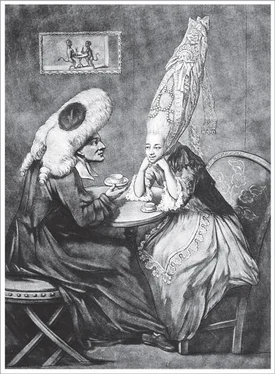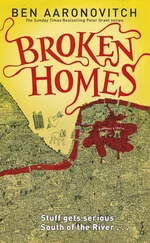Bill Bryson - At Home
Здесь есть возможность читать онлайн «Bill Bryson - At Home» весь текст электронной книги совершенно бесплатно (целиком полную версию без сокращений). В некоторых случаях можно слушать аудио, скачать через торрент в формате fb2 и присутствует краткое содержание. Жанр: Старинная литература, на английском языке. Описание произведения, (предисловие) а так же отзывы посетителей доступны на портале библиотеки ЛибКат.
- Название:At Home
- Автор:
- Жанр:
- Год:неизвестен
- ISBN:нет данных
- Рейтинг книги:4 / 5. Голосов: 1
-
Избранное:Добавить в избранное
- Отзывы:
-
Ваша оценка:
- 80
- 1
- 2
- 3
- 4
- 5
At Home: краткое содержание, описание и аннотация
Предлагаем к чтению аннотацию, описание, краткое содержание или предисловие (зависит от того, что написал сам автор книги «At Home»). Если вы не нашли необходимую информацию о книге — напишите в комментариях, мы постараемся отыскать её.
At Home — читать онлайн бесплатно полную книгу (весь текст) целиком
Ниже представлен текст книги, разбитый по страницам. Система сохранения места последней прочитанной страницы, позволяет с удобством читать онлайн бесплатно книгу «At Home», без необходимости каждый раз заново искать на чём Вы остановились. Поставьте закладку, и сможете в любой момент перейти на страницу, на которой закончили чтение.
Интервал:
Закладка:
When you consider how quickly the American colonists scythed their way through the towering forests that greeted them upon arrival, it is hardly surprising that a shortage of timber was a chronic and worrisome problem in the much more confined and crowded landscape of England. Legend and fairy tales may have left us with an ineradicable popular image of medieval England being a land of dark and brooding forests, but in fact there weren’t many trees for the likes of Robin Hood and his merry men to hide behind. As long ago as 1086, at the time of the Domesday Book, just 15 percent of the English countryside was wooded.
Throughout history Britons have used and needed a lot of wood. A typical farmhouse of the fifteenth century contained the wood of 330 oak trees. Ships used even more. Nelson’s flagship, Victory , consumed probably three thousand mature oaks—the equivalent of a good-sized woodland. Oak was also used in large quantities in industrial processes. Oak bark, mixed with dog feces, was used in the tanning of leather. Ink was made from oak galls, a kind of flesh wound in trees created by a parasitic wasp. But the real consumer of wood was the charcoal industry. By the time of Henry VIII, producing sufficient charcoal for the iron industry required nearly 200 square miles of forest annually, and by the late eighteenth century that figure had grown to 540 square miles a year, or about one-seventh of the total woodland in the country.
Most woodlands were managed through coppicing—cutting them back, then letting them grow out again—so it wasn’t as if great swaths were being clear-felled every year. In fact, the charcoal industry, far from being a culprit, was responsible for a great deal of woodland maintenance—though what it preserved, it must be said, tended to be characterless, small-rise woods rather than mighty sun-pierced stands of forest primeval. Even with careful management, the demand for wood was so relentlessly upward that by the 1500s Britain was using timber faster than it could replenish it, and by 1600 wood for building was in desperately short supply. The half-timbered houses that we associate with this period in England are a reflection not of an abundance of timber, but a paucity of it. They were the owners’ way of showing that they could afford a scarce resource.
Only necessity finally made people turn to stone. England had the most wonderful building stone in the world, but the English took forever to discover it. For nearly a thousand years, from the collapse of the Roman Empire to the age of Chaucer, wood was the almost invariable building material of England. Only the most important buildings—cathedrals, palaces, castles, churches—were accorded stone. When the Normans came to England, there wasn’t a single stone house in the country. This was slightly remarkable, because just underneath nearly everyone’s feet was sublime building stone thanks to the existence of a great belt of hard-wearing oolitic limestones (that is, ones containing lots of spherical ooliths, or grains), running in a broad arc across the body of the country, from Dorset on the south coast to the Cleveland Hills of Yorkshire in the north. This is known as the Jurassic belt, and all the most famous building stones of England, from Purbeck marble and the white stone of Portland to the honeyed blocks of Bath and the Cotswolds, are found within its sweep. These immensely ancient stones, squeezed out of prehistoric seas, are what give so much of the British landscape its soft and timeless feel. In fact, timelessness with respect to English buildings is a distinct illusion.
The reason stone wasn’t used more was that it was expensive—expensive to extract because of the labor involved, and expensive to move because of its enormous weight. Hauling a cartload of stone ten or twelve miles could easily double its cost, so medieval stone didn’t travel far, which is why there are such appealing and specific regional differences of stone use and architectural style throughout Britain. A good-sized stone building—a Cistercian monastery, say—might require forty thousand cartloads of stone to build. A stone building was awesome not just because it was massive but because it was massively stony. The stone itself was a statement of power, wealth, and splendor.
Domestically, stone was hardly used at all until the eighteenth century, but then it caught on fast, even for simple buildings like cottages. Unfortunately, large areas outside the limestone belt had no local stone, and this included the most important and building-hungry place of all: London. The environs of London did, however, hold huge reserves of iron-rich clay, and so the city rediscovered an ancient building material: brick. Bricks have been around for at least six thousand years, though in Britain they date only from Roman times, and Roman bricks were not actually very good. For all their other building skills, the Romans lacked the ability to fire bricks in a way that would allow big ones to be baked all the way through, so they made thinner bricks which were more like tiles. After the Romans departed, bricks fell out of use in England for the better part of a thousand years.
Bricks began to appear in some English buildings by about 1300, but for the next two hundred years native skills were so lacking that it remained usual to bring in Dutch brickmakers and bricklayers when building a brick house. As a home-produced building material, brick came into its own in the time of the Tudors. Many of the great brick buildings like Hampton Court Palace date from this period. Bricks had one great advantage: they could frequently be made on-site. The moats and ponds that we associate with Tudor manor houses often denote where clay was dug out to be made into brick. But bricks had drawbacks, too. To create a decent brick, the brickmaker had to get every stage exactly right. He had first to mix carefully two or more types of clay to ensure the right consistency to prevent warping and shrinkage when fired. The prepared clay was then formed into brick shapes in molds, which had to be air-dried for two weeks. Finally, the bricks were stacked and fired in an oven. If any of these stages was flawed—if the moisture content was too high or the heat of the kiln not exactly right—the result was imperfect bricks. And imperfect bricks were common. So bricks in medieval and Renaissance Britain had a high prestige value. They were novel and stylish and generally only appeared in the smartest and most important structures.
Perhaps the greatest demonstration of the difficulty of making bricks—or possibly just the greatest demonstration of single-minded futility—was in the 1810s when Sydney Smith, the well-known wit and cleric, decided to make his own bricks for the rectory he was building for himself at Foston le Clay in Yorkshire. He was said to have unsuccessfully fired 150,000 bricks before finally conceding that he probably wasn’t going to get the hang of it.
The golden age of English brick was the century from 1660 to 1760. “Nowhere in the world can more beautiful brickwork be seen than in the best English examples of this age,” Ronald Brunskill and Alec Clifton-Taylor write in their definitive book, English Brickwork . A big part of the beauty of bricks of this period was their subtle lack of uniformity. Because it was impossible to make really uniform ones, bricks were of a lovely range of hues—from pinkish red to deepest plum. Minerals in the clay give bricks their color, and the predominance of iron in most soil types accounts for the disproportionate weighting toward red. The classic London yellow stock bricks, as they are known, take their color from the presence of chalk in the soil. White bricks (which aren’t actually white at all, but a creamy yellow) have a high lime content.
Bricks had to be laid in a staggered pattern so that the vertical joins didn’t form continuous straight lines (which would weaken the structure), and a range of styles arose, all fundamentally dictated by considerations of strength, but also by a pleasant impulse to provide variety and beauty. English bond is a style in which one row is made up entirely of stretchers (the long side of bricks) and the next is made only of headers (the end side). In Flemish bond, headers alternate with stretchers from brick to brick. Flemish bond is much more popular than English, not because it is stronger, but because it is more economical since every facade has more long faces than short ones, and thus requires fewer bricks. But there were many other patterns—Chinese bond, Dearne’s bond, English garden-wall bond, cross bond, rat-trap bond, monk bond, flying bond, and so on—each signifying a different configuration of headers and stretchers. These elemental patterns could be additionally enhanced by making some of the bricks stick out slightly, like little steps (a practice known as corbelling), or by inserting different colored bricks to form a diamond pattern, known as a diaper. (The relationship between a pattern of bricks and a baby’s undergarment is that the baby garment was originally made from linen threads woven in a diamond pattern.)
Читать дальшеИнтервал:
Закладка:
Похожие книги на «At Home»
Представляем Вашему вниманию похожие книги на «At Home» списком для выбора. Мы отобрали схожую по названию и смыслу литературу в надежде предоставить читателям больше вариантов отыскать новые, интересные, ещё непрочитанные произведения.
Обсуждение, отзывы о книге «At Home» и просто собственные мнения читателей. Оставьте ваши комментарии, напишите, что Вы думаете о произведении, его смысле или главных героях. Укажите что конкретно понравилось, а что нет, и почему Вы так считаете.












